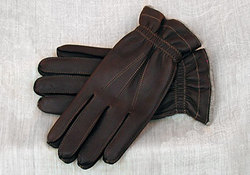For those of you not familiar with the TechnoLawyer (Calories Count) Diet, a quick recap: In early 2004, I set out to lose weight by developing a deep understanding of calories and caloric density, calculating the daily caloric intake (DCI) for my desired weight, and then creating about 20 filling and enjoyable meals that fit within my DCI. Today, I'll weigh in again, plus share my latest calorie counting insights and review my new high-tech Tanita InnerScan BC533 scale.
When I last checked in on November 29, 2004, I weighed 147 pounds. This
morning, I weighed in at 140 pounds. Therefore, I'm down 45 pounds
total from the 185 pounds I weighed in early 2004. I now consider
myself at my ideal weight.
Counting Calories at Lunch ...
When you're overweight, you can lose weight relatively easily, but when
you're at the high end of your normal weight range, it becomes much
more difficult to lose weight. For example, I quickly lost 30 pounds in
my first three months, but it then took a year to lose 15 more pounds.
I had difficulty counting calories at lunch because I always eat lunch
out, and none of my usual haunts provided nutritional information. But
then last August, Chipotle, an upscale
Mexican fast food chain, opened up near our office. After obtaining a
nutritional chart from the company, I
realized that Chipotle could help me lose more weight.
Most of the people standing in line every day at Chipotle are overweight. And no wonder — the burritos they buy consist of
1,500 calories or more! By contrast, my burritos range from 600-1,000
calories depending on what I plan to eat for dinner. For example, a
burrito bol (no tortilla) with pinto beans (two scoops), chicken,
tomato salsa (two scoops), and guacamole contains 715
calories.
And now for the best part — thanks to ChipotleFan.com, you need not manually count
calories. Instead, the site features a nutritional calculator — just
check the items in your burrito and the Web site counts the calories
for you. (It amuses me to no end that a fan Web site is better than the
corporate Web site.)
For all I know, you may hate Mexican food. Therefore, I'm not
suggesting that you eat at Chipotle every day. However, if you want to
reach the low end of your normal weight range, try to eat lunch at
places that provide nutritional information. This way, you can plan
your meals and stay within your DCI.
Ironically, the fast food chains do the best job of providing nutritional information, including calories. I'm certainly not an advocate for the fast food industry, but despite what the documentary Super Size Me would have you believe, you could eat three times a day at McDonald's and lose weight (filmmaker Morgan Spurlock gained weight because he consumed too many calories, not because he ate at McDonald's).
I'm not suggesting that you do so (nutritional concerns aside, many McDonald's items have a high caloric density, which makes it more difficult though not impossible to stay within your DCI and also satisfy your hunger). Instead, I'm just demonstrating how much control you can have over your weight when you count calories and plan meals. Too bad all restaurants don't provide nutritional information.
Tanita InnerScan BC533 Body Composition Monitor (Scale) ...
In July 2005, I purchased a Tanita InnerScan BC533 scale. This clever gadget
not only calculates your weight, but also your body fat percentage, water
percentage, visceral fat, muscle mass, physique rating, bone mass,
DCI, and metabolic age.
In particular, monitoring body fat will help you to determine if you're
losing fat or muscle. If you find yourself losing muscle, you may need
to work with a professional. My current body fat percentage is 13.3%,
which falls within the normal range of 8-19% for 18-39 year-old men,
though I'd like to get it down to 10%.
The scale works by sending an electrical impulse through your body —
completely harmless unless you're pregnant or use a pacemaker, in which
case you should not use the scale. To get started, you enter your age,
height, gender, and activity level. The scale has 4 presets (if you
don't have 4 people in your household, you can use more than one preset
for yourself to play around with activity levels), plus it also has a
guest mode (great for dinner parties — uh, maybe not!).
I love the scale, but would like to report on two interactions with Tanita.
First, my scale arrived with the wrong manual and reference guide. The
reference guide is important because most of the readings have no
meaning without the accompanying explanation. At first, Tanita sent me
a Xerox copy of the manual and failed to send me the reference guide —
very annoying. After complaining, it sent me the actual, bound manual
and reference guide.
Second, I agree with all the scale's readings except DCI. Given my
interest in (obsession with?) weight control, I consider myself an
expert at DCI. I eat 1,700 to 1,800 calories/day, but the scale
provides me with a DCI of 2,400 to 2,500 calories/day. Given this 700
calorie discrepency (that's 247 grams of ice cream!), I sent Tanita my
statistics thinking that my scale might have a defect, but Tanita
stands by its DCI calculation. This disceprency remains a mystery to
me, but I'm sticking with my DCI, not Tanita's.
Tanita also sells the IronMan BC554 — identical to my
InnerScann BC533 except that it features a different design and
calculates Basal Metabolic Rate (BMR) instead of DCI. BMR provides you
with the amount of calories your body burns even without any physical
activity (your baseline). Multiplying your BMR by an activity factor is
how you calculate DCI. The trick lies in choosing your activity factor.
Finally, a buying tip. I initially purchased the scale from Amazon, but
Amazon shipped it "naked" without an outer cardboard box. As a result,
the scale arrived looking like it had travelled through a war zone. I
returned it, and instead ordered the scale from Bodytronics, which
packed it properly in a cardboard box.
Bodytronics sells the BC533 for $120 and the BC554 for $130.
About TechnoEditorials
A TechnoEditorial is the vehicle through which we opine and provide tips of interest to managing partners, law firm administrators, and others in the legal profession. TechnoEditorials appear first in TechnoGuide, and later here in TechnoLawyer Blog. TechnoGuide, which is free, also contains exclusive content. You can subscribe here.












